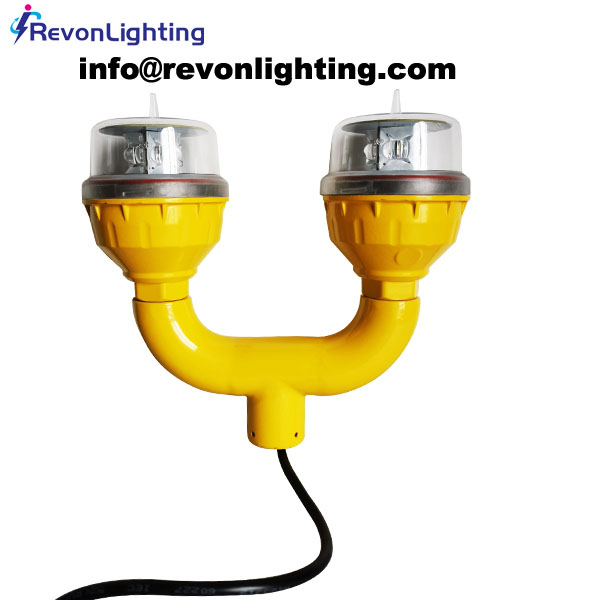Double Obstruction Lights: Enhancing Safety for Tall Structures
Introduction
Ensuring the safety of tall structures, such as buildings, towers, bridges, and wind turbines, is crucial to protect both aviation and ground operations. Double obstruction lights play a significant role in enhancing safety by providing increased visibility and redundancy. This article explores the importance of double obstruction lights and their impact on improving safety for tall structures.
Understanding Double Obstruction Lights
Double obstruction lights refer to a configuration where two synchronized lights are installed on a tall structure. These lights are typically red or white and emit continuous or flashing signals. The primary purpose of double obstruction lights is to make structures more visible to aircraft pilots, enabling them to navigate safely around potential obstacles. This redundancy in lighting adds an extra layer of safety, ensuring that even if one light malfunctions, the other can continue to provide visibility.

Enhancing Safety for Tall Structures
Increased Visibility:
Double obstruction lights significantly enhance the visibility of tall structures during day and night.
The synchronized flashing or continuous beams enable pilots to identify obstacles from a distance, reducing the risk of collisions.
Redundancy and Reliability:
The use of two lights provides redundancy, minimizing the chances of lighting failure due to technical issues or adverse weather conditions.
In case one light fails, the other light continues to function, ensuring uninterrupted visibility and maintaining safety standards.
Compliance with Aviation Regulations:
National and international aviation authorities prescribe regulations regarding the installation and maintenance of obstruction lights.
By using double obstruction lights, structure owners comply with these regulations and contribute to a standardized approach to safety in aviation.
Mitigation of Light Outages:
Double obstruction lights mitigate the risks associated with light outages caused by power failures or maintenance requirements.
When one light undergoes maintenance or experiences an outage, the second light ensures continuous visibility until the issue is resolved.
Adaptability to Different Environments:
Double obstruction lights can be tailored to fit various environments, including urban areas, rural landscapes, and coastal regions.
By adapting the intensity, color, and configuration of the lights, they effectively address the specific requirements and challenges of different locations.
Integration with Monitoring Systems:
Double obstruction lights can be integrated with monitoring systems that facilitate real-time visibility checks and maintenance alerts.
This integration enables timely responses to lighting failures, ensuring maximum operational efficiency and safety for tall structures.
Conclusion
Double obstruction lights are indispensable components in securing the safety of tall structures. Through increased visibility, redundancy, and compliance with aviation regulations, these lights greatly reduce the risks associated with obstructed airspace. Their adaptability to different environments and integration with monitoring systems further enhance their effectiveness. By embracing double obstruction lights, structure owners prioritize safety, contribute to a standardized approach to aviation regulations, and ensure the well-being of both aviation and ground operations.